When we were in first grade, our mother picked us up early from school and told us that our arcade game education started that afternoon. We played Pac-Man at Chuck E. Cheeses on a large arcade cabinet while she told us about the games from her childhood. It was hard for us to see because the arcade cabinet was so tall, and we were so short.
Fast forward to fifth grade. We got an Intellivision Flashback machine, and our mother sat us down to play a round of Astrosmash. Its a game where colorful asteroids fall down the screen and you shoot them with little white line bullets. It was her favorite game from childhood, the one that she wanted so badly but had to go over to her friends house to play.
Although it wasnt complicated compared to the games we play now, it was still a lot of fun to blast the rocks apart and avoid being crushed by the falling debris. Plus it was cool to see what our mother played when she was our age.
And these games played a huge role in the games we have today. All the games we know and love, like Asphalt 8 and Candy Crush and Monument Valley, wouldnt be possible without these arcade predecessors paving the way.
We realized we could recreate these games together in Scratch, an open source programming platform maintained by Massachusetts Institute of Technology (MIT), which made our mother happy. But we also realized that we could teach you, too, and you could make your own versions, either with your parents (so they have a reason to drone on and on about video games from when they were your age) or on your own.
In this book, youll learn how to program your own video games as well as draw your own unique characters. By doing the exercises in this book, youll also walk away with general programming concepts that will help you even outside of the Scratch environmentconcepts like XY coordinates, variables, and conditional statements.
Dont worry if math isnt your strong suit or if youve never written a line of code in your life. This book will give you all the tools you need to get started.
Thats what this book is all about. Get ready to dive into game design, pixel art, and programming.
Acknowledgments
We are very grateful to all the people who helped make this book possible. First and foremost, the whole Manning team, especially our fearless development editor, Helen Stergius, and Brian Sawyer and Marjan Bace, for giving two kids a chance. Thanks to all the reviewers whose comments helped make this a better book: Gonzalo Fernando Huerta Cnepa, Jan Vinterberg, Karim Alkama, Khaled Tannir, Larissa Kun, Manjula Iyer, Martin Beer, Meredith Godar, Michael Jensen, Michal Konrad Owsiak, Peter Lawrence, Pavol Kral, Philip Coates, Rebecca Jones, Rocio Chongtay, and Rodney Weis. Thank you to Aleksandar Dragosavljevi, Robin Dewson, Gonzalo Fernando Huerta Cnepa, and Matko Hrvatin in development, Corbin Collins, Alyson Brener, Kevin Sullivan, David Novak, Janet Vail, Marija Tudor, Richard Sheppard, Leslie Haimes, and Mary Piergies in production, and Candace Gillhoolley and Susan Harkins in post-production for helping us publish our first book!
Thank you Rick Kughen for being the first person to embrace this book. This book wouldnt be here without you.
Our friends who cheered us on include Emma, who asked how the book was going almost every day, and James for the Overwatch breaks. Also all our friends at Coderdojo, including Alex, Megan, Ben, and Finn (plus their awesome parents who run the groupFrank and Josh), for brainstorming ideas and giving us coding advice.
Weve had really great teachers over the years, but we especially want to thank Mrs. Siska for teaching us how to read and Ms. Letina for making us love writing.
Thank you to our family! Grandma, who always lets us use her computer, and Grandpa, who gave us his laptop so we could continue the book. To Saba and Safta for all the love and support, plus Olivia, Penelope, Wendy, Jonathan, Randall, Morgan, and all the other people who sent their cheers along the way.
Thank you to Truman for wheeking through every chapter recording (and being the best piggie) and Linus, who joined our family near the end of the book.
Thank you to Daddy, our Peggy, who was the hidden member of our team. You may not see his words in these pages, but his love feeds our creativity and energy. He gives hugs when were frustrated, knows the right words to say when were overwhelmed, and makes us laugh with his questions. (Plus he watches Buffy with us after a long days work.)
Thank you to Mommy. If you hadnt decided to be an author, we wouldnt have gotten a chance to become authors, too. You helped us get this book deal and you typed up all of this. You are the coolest mother. Thank you for helping us organize our thoughts, turn in pages on time, and for turning an after-school thought into a reality. You taught us how to handle a time-sensitive, high-pressure work environment.
And now to switch gears, this is Gabriel, and I want to thank Sadie for giving me amazing artwork to turn into games and for being a comforting sister throughout the book. I loved working with you on this.
But wait! This is Sadie, and I want to thank my very smart twin brother, Gabriel. It has been fantastic to work with you. Thank you for making fun games for the book. Im grateful youre my brother.

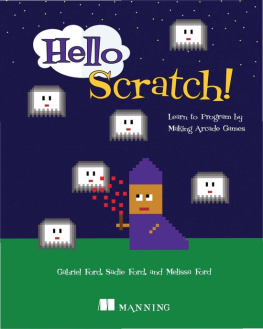
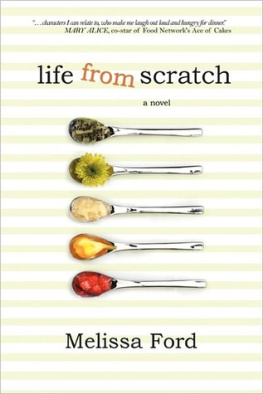

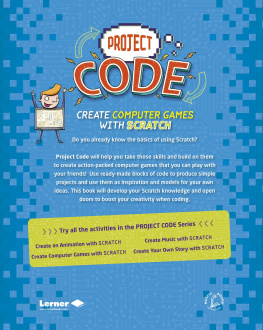


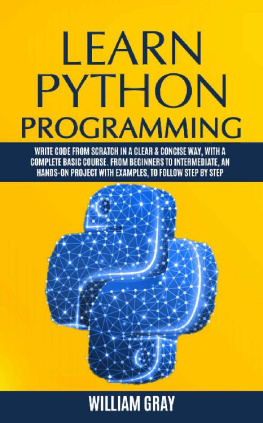
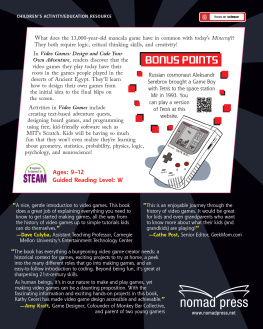


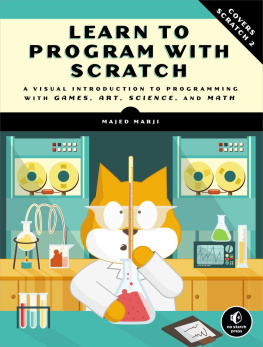


 Recognizing the importance of preserving what has been written, it is Mannings policy to have the books we publish printed on acid-free paper, and we exert our best efforts to that end. Recognizing also our responsibility to conserve the resources of our planet, Manning books are printed on paper that is at least 15 percent recycled and processed without elemental chlorine.
Recognizing the importance of preserving what has been written, it is Mannings policy to have the books we publish printed on acid-free paper, and we exert our best efforts to that end. Recognizing also our responsibility to conserve the resources of our planet, Manning books are printed on paper that is at least 15 percent recycled and processed without elemental chlorine.